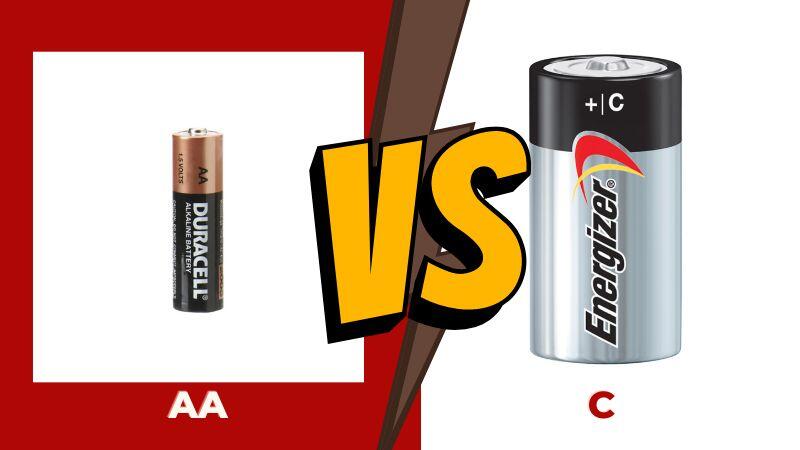Batteries are ubiquitous in modern life, powering a vast range of devices from smartphones to vehicles. These portable power sources have become an indispensable part of our daily routines, providing us with the convenience of being able to use electronic devices on the go. There are various types and sizes of batteries available in the market, each designed for specific applications, and among the most common are AA and C batteries. These two battery sizes are popular for their versatility and compatibility with a wide range of devices. In this article, we will explore the differences between AA and C batteries, including their size, capacity, and applications, to help readers choose the right battery for their needs.
Differences Between AA and C Batteries
Size
The most apparent difference between AA and C batteries is their size.
AA batteries are smaller, measuring approximately 14.5mm in diameter and 50.5mm in length. On the other hand, C batteries are larger, with a diameter of approximately 26.2mm and a length of 50mm. Due to their size, C batteries tend to be heavier than AA batteries.
Capacity
Another significant difference between AA and C batteries is their capacity or energy storage. C batteries have a higher capacity than AA batteries. Typically, a C battery can store between 8,000 to 9,000 milliampere-hours (mAh) of energy, while an AA battery can store between 2,400 to 3,000 mAh. This means that C batteries can power devices for a more extended period than AA batteries. However, it’s essential to note that the actual capacity of a battery can vary depending on its brand, type, and usage.
Applications
The size and capacity of AA and C batteries make them suitable for different types of devices. AA batteries are commonly used in low-drain devices that require less power, such as remote controls, clocks, and some toys. They are also commonly used in high-drain devices that require more power, such as digital cameras, portable radios, and handheld game consoles. However, AA batteries may not provide enough power to sustain these high-drain devices for extended periods.
C batteries, on the other hand, are used in devices that require more power, such as flashlights, radios, and some toys. They are also commonly used in electronic devices that require more extended periods of use, such as boomboxes and portable speakers. C batteries are also suitable for outdoor activities, such as camping and hiking, where a reliable power source is essential.
Conclusion
In summary, AA and C batteries are two of the most commonly used battery sizes. While they may look similar, they have distinct differences in terms of size, capacity, and applications. AA batteries are smaller and have a lower capacity, making them suitable for low-drain devices. C batteries, on the other hand, are larger and have a higher capacity, making them suitable for high-drain devices and outdoor activities. Ultimately, the choice between AA and C batteries depends on the device’s power requirements and the user’s needs.
READ MORE:












